
The seven digital marketing trends I’ve identified for my top 2020 briefing are:
- Zero click searches will continue to rise
- UX will continue to influence SEO
- Video traffic will continue to grow, reaching 80% of all traffic by 2021
- Reporting and attribution will be impacted by ITP (intelligent tracking prevention)
- A continued shift to PPC automation
- Diversification of traditional PPC spend
- Voice and visual search monetisation
1. Zero-click searches will continue to rise
With studies each year on the proportion of all searches that result in clicks through to websites released by Sparktoro, we recently learned that less than half of all Google searches now result in a click.
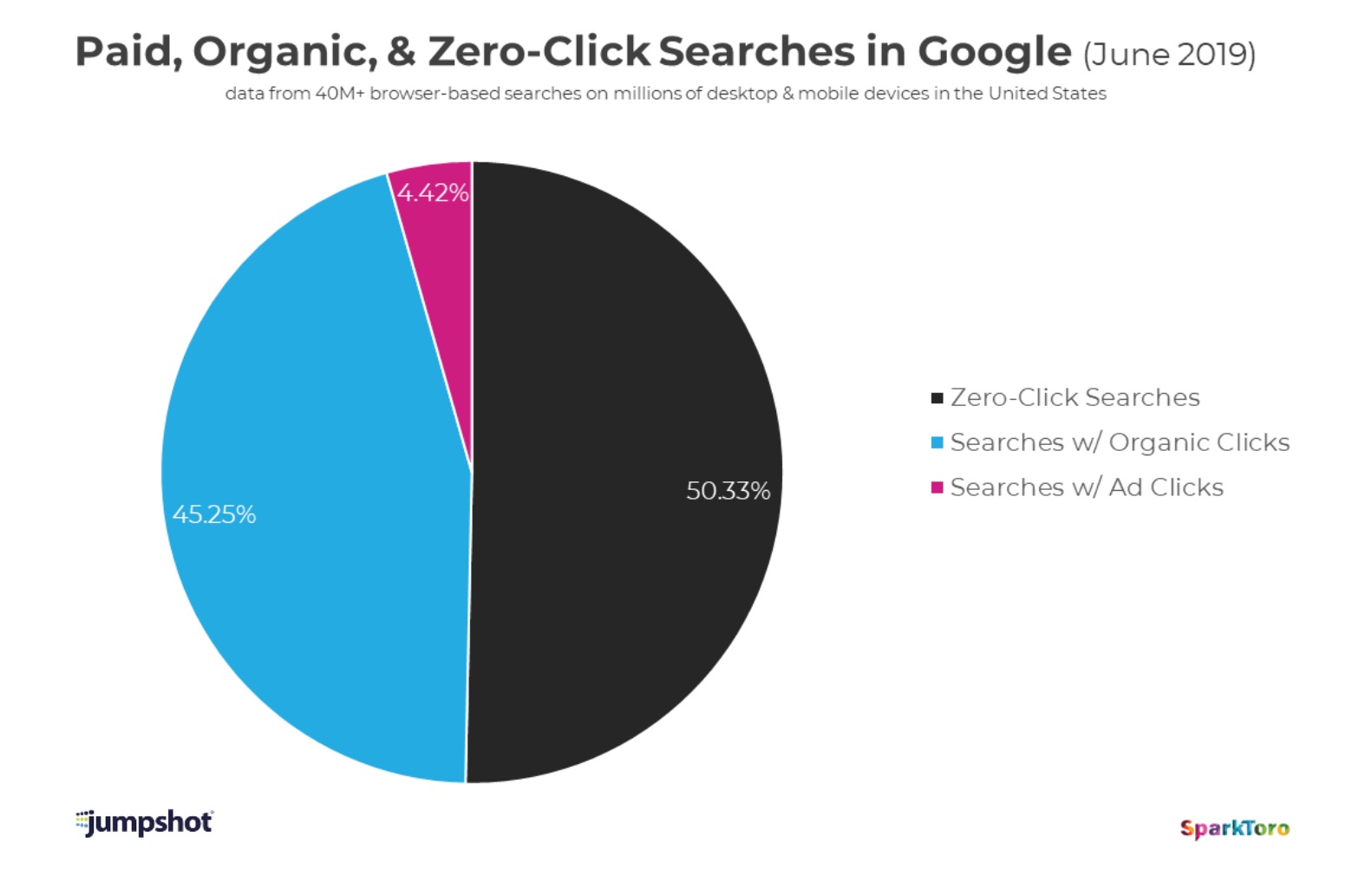
This is partly due to the rise of Google’s featured snippets, and also the fact features that would have once driven traffic to a range of different sites, have over time been built into Google’s search engine results pages.
For example, Google can now present live sports scores, flight information, hotel reviews, restaurant reviews, recipes and recently built a mortgage calculator – instantly wiping out the viability of many websites built for that very function alone…
This isn’t the best mortgage calculator. It’s not the one with the most links or citations. It’s just the one owned by Google. https://t.co/HpDufVtG7S
— Rand Fishkin (@randfish) December 1, 2019
What does this mean for me?
- Focus on visibility, not clicks – with declining clicks it’s important not just to focus on traffic generation, but also building visibility through optimising for featured snippets. Also, try to claim valuable answer boxes for informational queries related to your niche.
2. UX as a key component of SEO
The second of our digital marketing trends has to do with UX. Google is becoming much smarter through artificial intelligence-based algorithms such as Rankbrain and improved NLP (natural language processing) ability due to recent developments such as BERT.
Bread and butter SEO is quickly becoming a thing of the past. SEO’s need to wise up to the fact that basic practices such as tweaking page meta data and simply adding more content to a page, while still important, will no longer generate the same impact they once did.
There are already Google submitted patents regularly surfaced online that clearly highlight Google’s intention to use user engagement signals such as time on page and user click-through rates as ranking factors in the future.
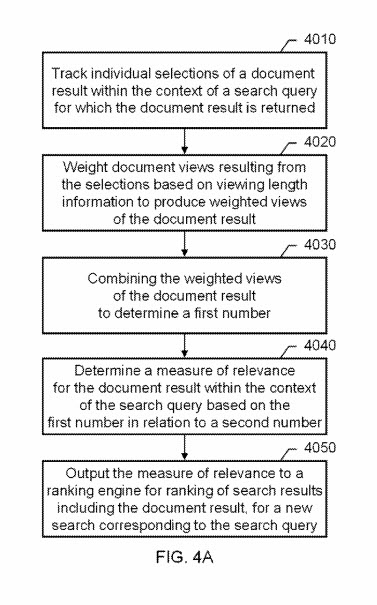
Google isn’t hiding the fact they want to present users with the best possible experience and are forcing sites to focus around site speed. With the new Chrome “slow warning badges”, and the speed reports in Google Search Console now front and centre for all webmasters to take note, it’s of greater importance now.
This will reignite conversations between SEO teams and designers. In some cases this will lead to a business case for redesigning page templates and reviewing how assets are loaded across entire sites.
What does this mean for me?
- Start measuring advanced UX signals in Google Analytics via tag manager. Use custom JavaScript events to measure content consumption depth, single element (e.g. button) engagement and even rage clicking! (fire when 3 clicks occur within 1 second). Tracking this will allow you to get a handle on more usability metrics across your site and make necessary improvements.
3. Video will continue to grow, representing 80% of all traffic by 2021
Video is a big deal when it comes to digital marketing trends.. (after Google!) and we’ve previously covered how to incorporate video as part of your online marketing strategy on this very blog! This upward trend of video will be a big part of digital marketing in 2020.
Check out these stats from Cisco which further highlight the growth of video over the year ahead:
- Video will represent 80% of all Internet traffic by 2021
- There will be nearly 1.9 billion Internet video users by 2021
- They’ll be watching 3 trillion minutes of video per month by 2021
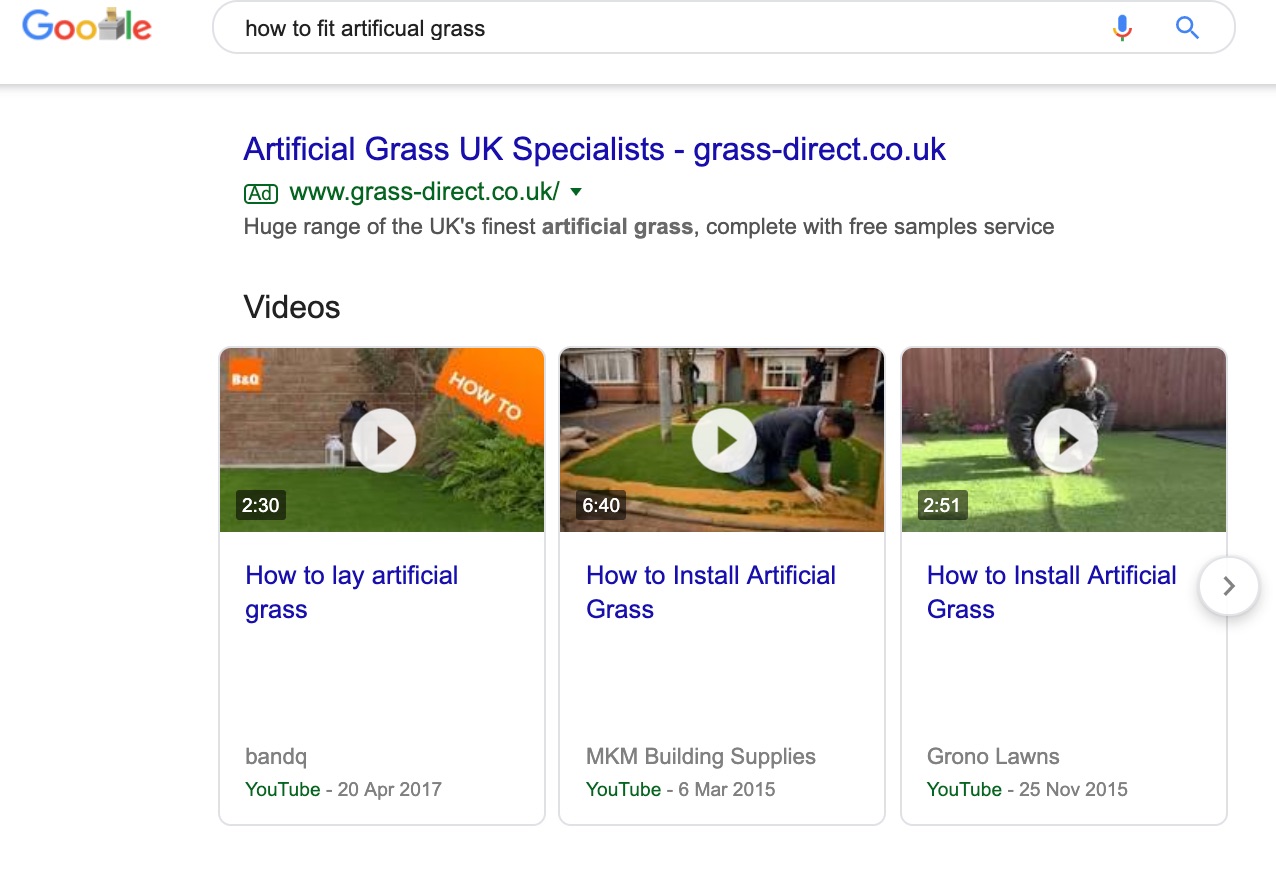
What does this mean for me?
- Focus on building organic video content which will boost SEO performance through increased visibility on Google and YouTube.
- Incorporate videos on to your website landing pages to explain complex topics, build trust and boost the conversion rate of your pages.
- An investment in video advertising across YouTube, partner networks, Facebook, Instagram and other social networks is going to essentially be required of all advertisers looking to bring in any level of traffic at the top of the funnel and to avoid losing customers to advertisers fishing further upstream in the year ahead!
4. ITP (intelligent tracking prevention) will continue to impact attribution
The latest version of Safari limits the ability for Google Analytics (and any other marketing tags) to track users across domains and between visits more than a day apart. This doesn’t mean that your site won’t be reporting traffic in GA. However, it does mean that the original source of this traffic may be classified inaccurately as direct, as opposed to organic or paid.
Attribution in Google Analytics (GA) relies on tracking users with a first-party user cookie – set on your domain by the Google Analytics tracking code.
ITP has very significant implications for web analytics, and breaks user tracking in some major ways:
- Any cookie set by the browser will be deleted after 7 days (ITP 2.1)
- Any cookie set by the browser, after the user has come from a cross-domain link, deleted after one day (ITP 2.2)
- Local storage (a workaround for ITP 2.1/2.2) set when the user comes from a cross-domain link is wiped after 7 days of inactivity (ITP 2.3)
Firefox has since followed suit with ETP (enhanced tracking prevention), and Chrome is also increasing its privacy features as a result. Expect this trend to continue in 2020 with user privacy still top of the agenda as a way of retaining market share for major web browsers.
What does this mean for me?
5. A Continued Shift Towards PPC Automation
Automation was the biggest trend of 2019, and you can be sure it’ll bring about continuous change for years to come. The days of tweaking keyword bids manually are long gone. PPC is now able to be largely automated, with the human touch adding value through intelligent budget diversification and smart audience targeting.
We’re already seeing Google taking away control of many elements of bid management through smart bidding technology. So the need for reliable first-party data to feed applied machine learning systems such as Google’s smart bidding technology has never been higher.
What does this mean for me?
- Poor data = poor decision making. Using as much first-party data as possible to fuel machine learning will boost the performance of any automated bidding platform, as the decisions that fuel any automated processes will be based on better quality data!
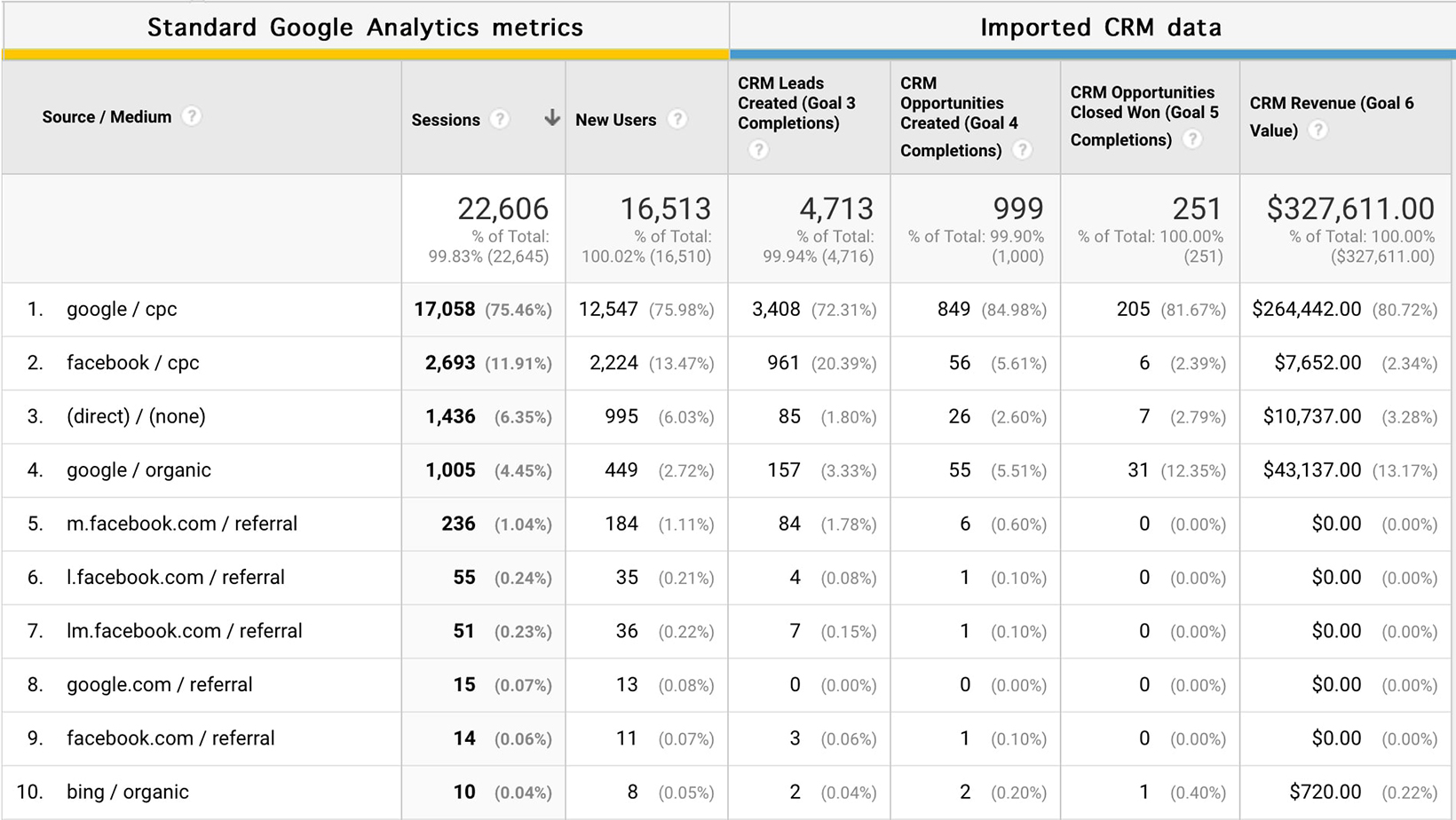
Example of first-party data pulled in to Google Analytics using GA connector
6. Diversification of traditional PPC spend
If you’re not looking to diversify your paid media investment across new channels in the coming year, you’ll likely miss out on new business.
Remember, all marketing (that includes offline!) should work together – no channel should be treated in isolation. Your paid creative should be consistent across all platforms.
The objective should be to find your audience wherever they hang out online and engage them. Don’t just rely on Google search to drive the bottom of the funnel traffic.
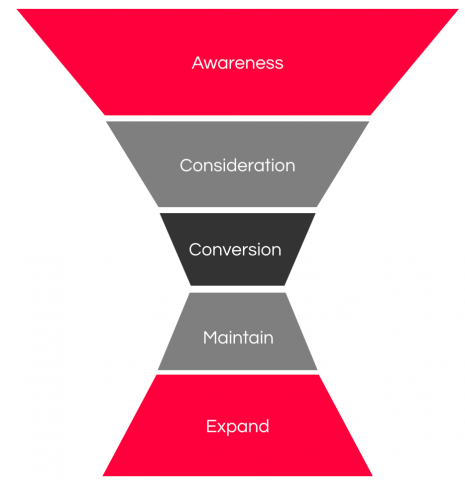
What does this mean for me?
- Set aside a ‘test and learn’ budget to ensure you’re able to remain nimble to emerging platforms such as Pinterest ads and Reddit ads. Don’t get left behind by your competition.
7. Voice and visual search monetisation
Back in 2018, I wrote a whitepaper on the rise of voice and visual search, presenting early use cases for brands and advertisers alike.
We’re already reaching a stage where voice assistants are starting to be monetised by voice ads, and visual search platforms such as Pinterest are attracting an increased slice of many brand’s advertising spend.
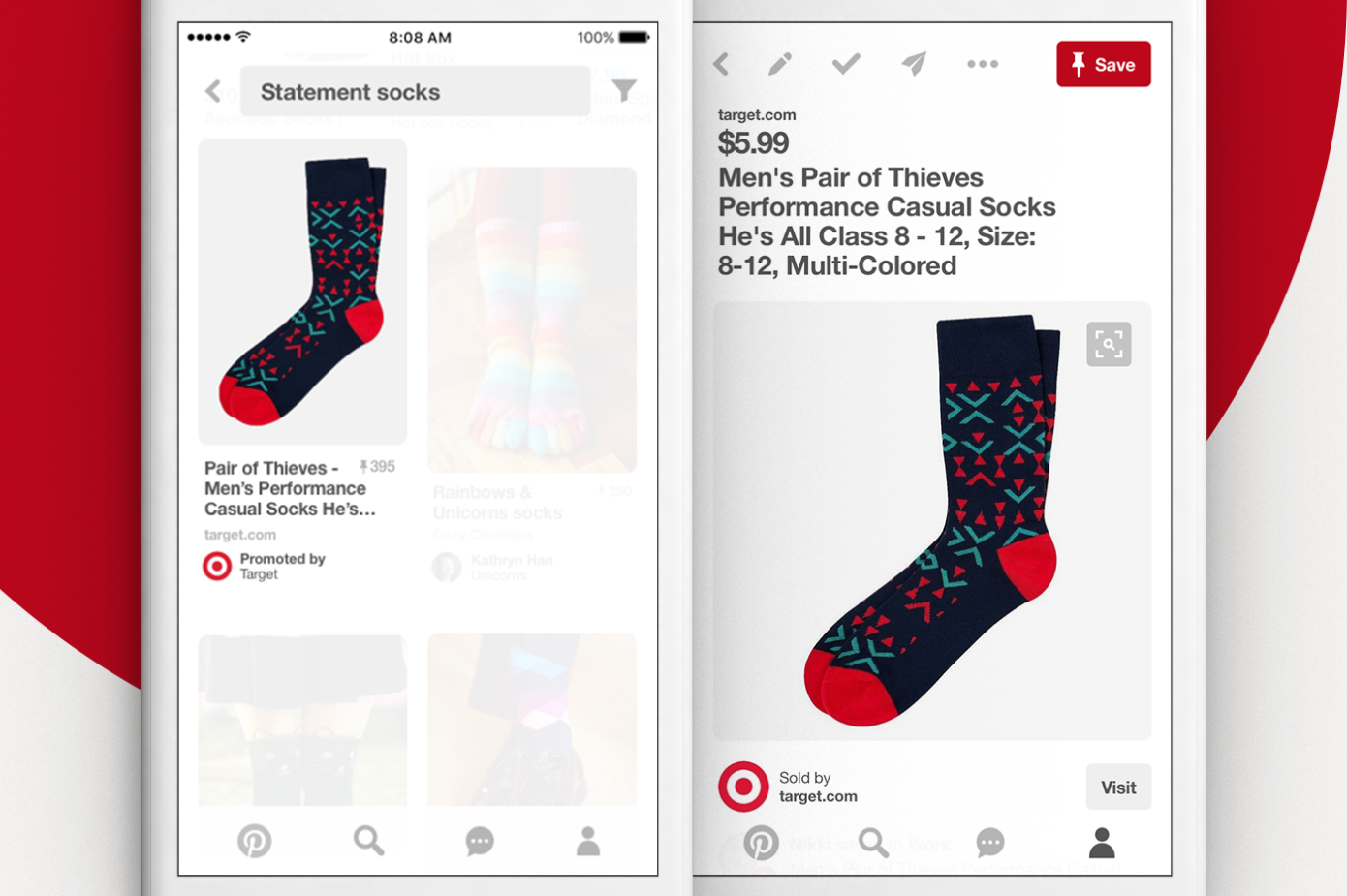
Expect greater adoption of visual search advertising platforms such as Pinterest in the new year. By the year-end, I’d strongly expect to see the options for voice advertising on smart assistants expand.
What does this mean for me?
- If you’re an e-commerce retailer, why not run a test campaign on Pinterest to see if you can capitalise on the increased use of visual search.
Like these digital marketing trends?
The post 7 Digital Marketing Trends for 2020 appeared first on Hallam.
